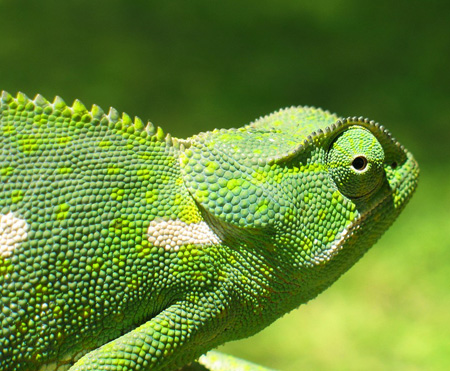Chameleons change color to communicate and intimidate rivals
 Washington, Dec 12 : While it is a well known fact that in order to protect themselves, some animals rapidly change color when their environments change, a new study has revealed that chameleons change colors in unusual ways when they want to convey different types of information during important social interactions.
Washington, Dec 12 : While it is a well known fact that in order to protect themselves, some animals rapidly change color when their environments change, a new study has revealed that chameleons change colors in unusual ways when they want to convey different types of information during important social interactions.
Arizona State University researchers found that when male chameleons challenge each other for territory or a female, their coloring becomes brighter and much more intense.
Males that display brighter stripes when they are aggressive are more likely to approach their opponent, and those that achieve brighter head colors are more likely to win fights. Also, how quickly their heads change color is an important predictor of which chameleon will win a skirmish.
Russell Ligon, a doctoral candidate in ASU's School of Life Sciences, and Kevin McGraw, an associate professor in the school, used photographic and mathematical modeling tools in new ways to study how the color change of veiled chameleons (Chameleon calyptratus) relates to aggressive behavior.
They studied the distance, maximum brightness and speed of color change of 28 different patches across the chameleons' bodies.
Chameleons typically have resting colors that range from brown to green, with hints of yellow, but each chameleon has unique markings. During a contest, the lizards show bright yellows, oranges, greens and turquoises.
The study is published in the journal Biology Letters. (ANI)